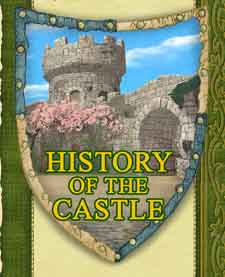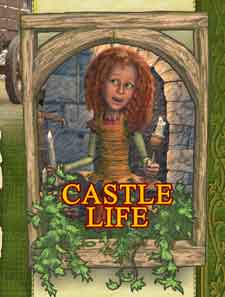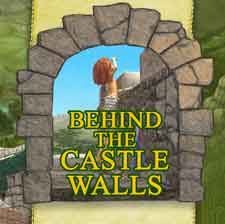What was it REALLY like
back in Jane's world?
(Part Two)
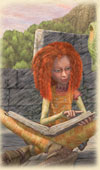 A BOUNTY OF BOOKS
A BOUNTY OF BOOKS
Jane is lucky. She is allowed to borrow books from the Royal library for her education. But in Jane's day, books were very rare and VERY expensive. Books were so expensive that a simple farmer or fisherman could never afford to buy one.
There are two reasons they were expensive. One was because printing had not been invented, so every page of every book had to be written by hand.
The second is because paper was very hard to make. Early forms were made by the Egyptians and the Greeks, but the first real paper was produced in China around 600AD. The secret formula passed through Korea to Japan, and then to the Middle East. (All these countries were more advanced and civilized than Europe.) Finally the formula came to Italy, and the Italians became famous throughout Europe for their wonderful, and very expensive, paper.
 COME BACK STICKY THING.
COME BACK STICKY THING.
In one Jane episode Ivon uses a boomerang as a weapon. (Watch out for it, the episode's called Jester Justice.) Today when we think of boomerangs we think of the aboriginal people of Australia. But curved boomerang sticks date back to the Stone Age in Europe. They were used for hunting by these ancient tribes. And many cultures have used them since then. King Tutankhamun, an Egyptian Pharaoh who died 2,000 years ago, owned a large collection of boomerangs. We know this because they were buried with him along with many other treasures, and were unearthed when his tomb was discovered.
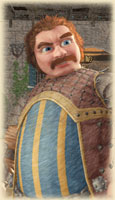 JANE PLAYED BOWLS
JANE PLAYED BOWLS
Some of the games we play today were very popular in Jane's time. Bowling was one of them. Ivon had a weapon made for him which he called the 'Bowling Ball Of Doom. It was a bowling ball with spikes on it. His plan was to roll it at his enemies, but of course the bowl just stuck in the ground and didn't roll. Totally brilliant, Ivon, well done.
A very early form of the game was played by the ancient Egyptians. Then in 200 AD a group of German monks adapted the game and called it kegels. This form of bowling became a huge hit with ordinary folk all over Europe. Then in 1500, hundreds of years after Jane's time, a famous theologian called Martin Luther refined the game to become nine pins which is very like the ten pin bowling we play today.
